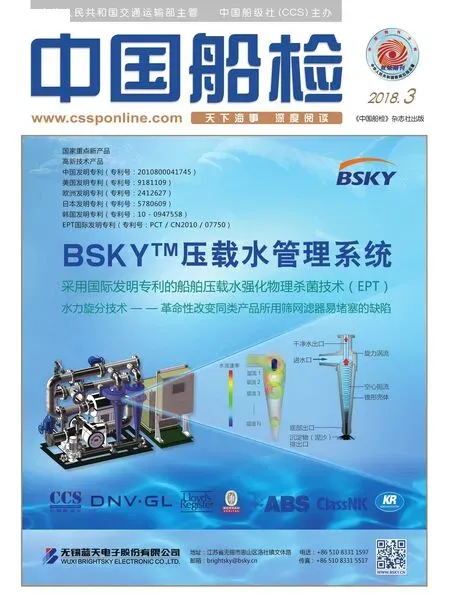The in fl uence of the revision of the Port State Control Procedure 2017
By Zhang Shulei Le Yongfeng Zhuang Xin
At the end of 2017, the IMO Assembly discussed and adopted the “2017 port state supervision procedure” A.1119 (30). The content of the new procedure is more rich and rigorous.By studying and identifying the important points of the Procedure, it can be found that it has the following new features:

1. Focusing on the new requirements of the III Code, and highlight the important position of the port state control.
The 2017 Procedure gives the role of PSC a clearer expression. Compared to the previous version, the new Procedure emphasized in the beginning that in addition to “provide basic guidelines for the implementation of PSC, and to reach uniformity in the implementation of the inspection, identification of the deficiencies in ships, equipment and crew as well as the use of control procedure”, the Procedure for the first time adds the description that “ the procedure plays a role in ful fi lling relevant conventions and rules and implementing the requirements of the III Code”.
2. Follow the new international maritime situation and maintain the optimization and improvement of the procedure.
In the aspect of the conventions applicable to the control, the revision includes 6 new rules, including the International Regulations for Preventing Collisions at Sea, the International Convention on civil liability for oil pollution damage (1969), the International Convention on civil liability for oil pollution damage, pollution and damage to the protocol of 1992 International Convention on civil liability for oil tanker (2001), 2004 international ship ballast water and sediment control and management Convention, the 2007 Nairobi international ship wreckage Convention, altogether 14 applicable conventions.
With the Manila amendments of the STCW convention taking effect, the 2017 Procedure completely rewrote the “inspection guidelines” for minimum manning and certification of ships, and its contents cover the amendment and the latest requirements of ILO. Its core content is ship inspection, which includes four parts such as inspection before boarding, preliminary inspection,clear basis, detailed examination.
In addition, the 2017 procedure for the first time standardize the inspection of “electronic certi fi cate”.
3. make clear the new idea of PSC inspection,and emphasize the “software” inspection of the ship.
Reading through the revision of 2017 procedure, a distinctive feature is highlighting the examination of“software” such as certificates, documents, records,procedures, personnel certification, operation by the crew, no longer emphasizing the “hardware” examination such as vessel structure, configuration, equipment and others, which provides a new train of thought for effective implementation of PSC.
In terms of inspection of operation by crew, the procedure added “a confined space entry and rescue maneuver” and “emergency steering drills”, which embodies the emphasis IMO gives to drill operation.The falsification of the drill records, the non-standard training records and the lack of equipment maintenance may be the basis for detailed examination of PSC.
In terms of ship safety management, the new procedure rewrites the whole “guidelines for PSCO on ISM Code”.The new procedure has put forward higher requirements on the PSCO, the shipping company and ship. The guideline on the one hand emphasizes that the inspection is to fi nd technical or operational defects, PSCO can not randomly expand to ISM rules. On the other hand, the guideline requires PSCO to have professional judgment and carry out stringent inspection of ships, urge ship to pay attention to safety management system and the construction of safety management cultureto integrate the system requirements into the daily ship management activities.
4. grasp the new concerns of the international community and enhance the awareness of environment protection of ships.
In this revision, the proportion of detention items related to MARPOL has increased greatly, adding three detainable deficiencies related to sanitary sewage.Secondly, the specification on marine incinerator is updated, with application scope being expanded from no more than 1500KW processing capacity to 4000KW.Thirdly, aiming at the energy efficiency management of ships, it includes two defects, namely, the lack of effective IEEC for ships and the lack of effective SEEMP for ships. The inspection defects related to the carbon emissions of ships has formally become PSC detainable deficiencies. In addition, the requirements for the use of fuel sulfur in ships in the 207 procedure are still emphasized. These changes all re fl ect IMO emphasis on combating illegal sewage discharge from ships, and it will be the next focus of the PSC inspection.

